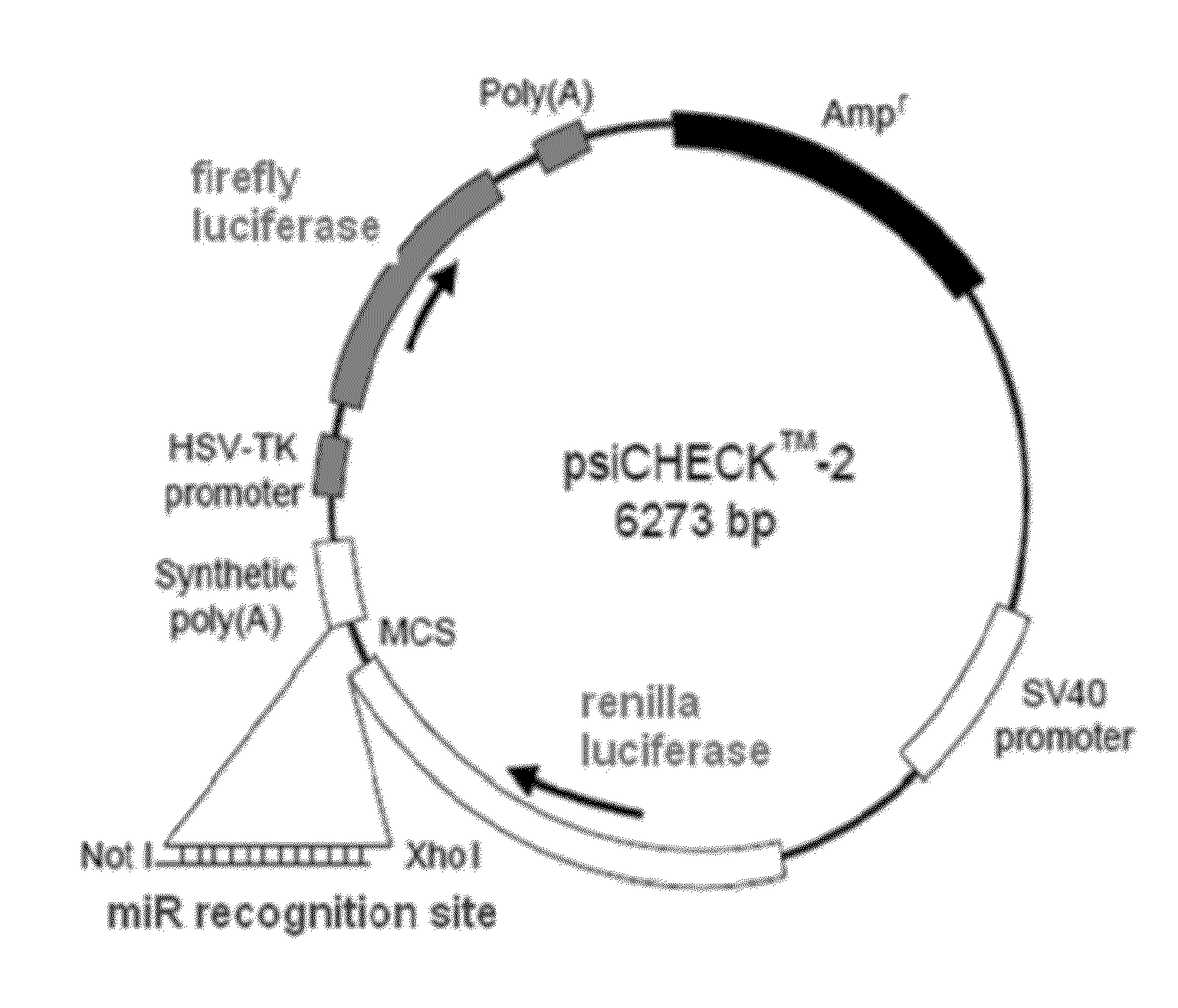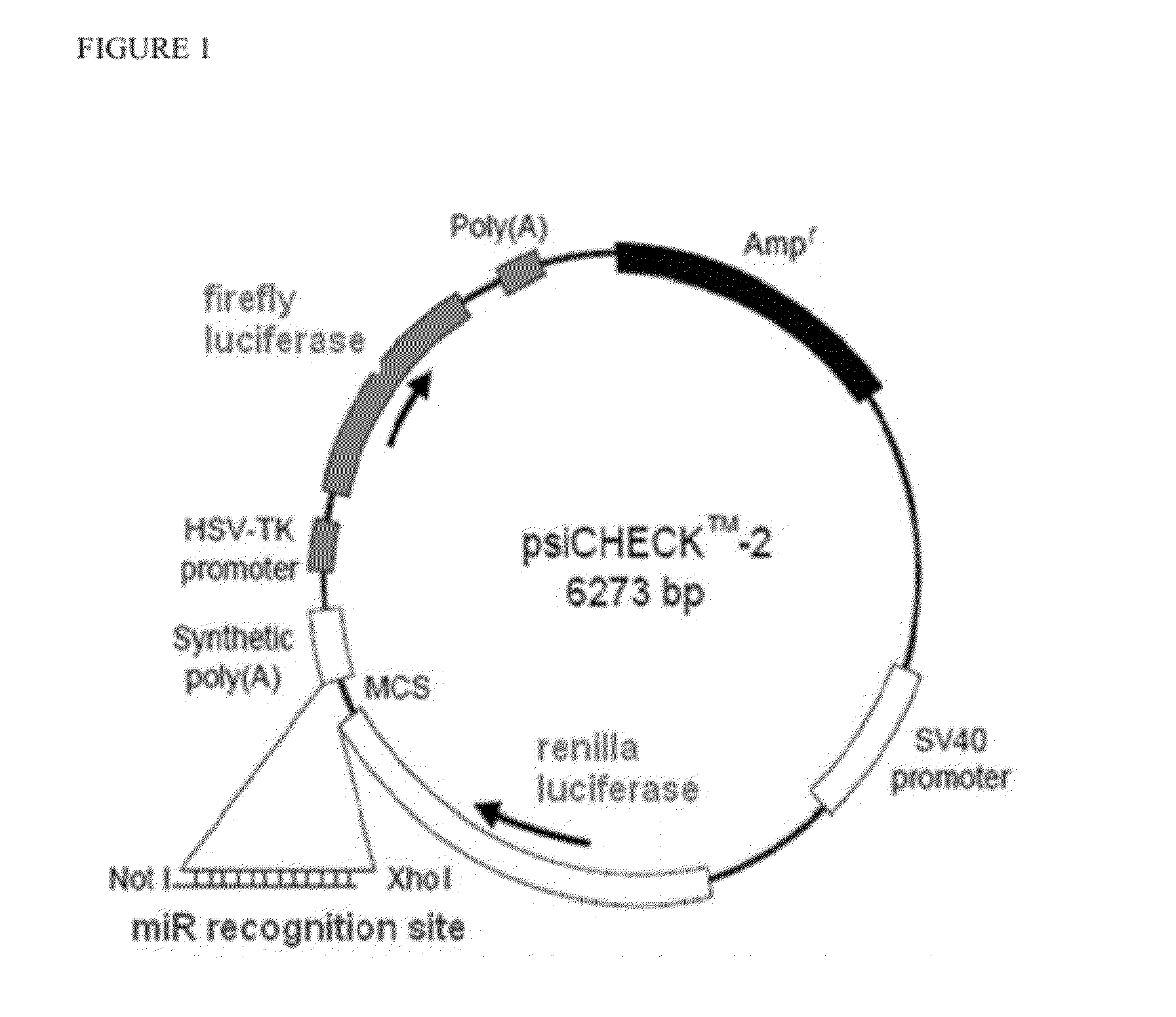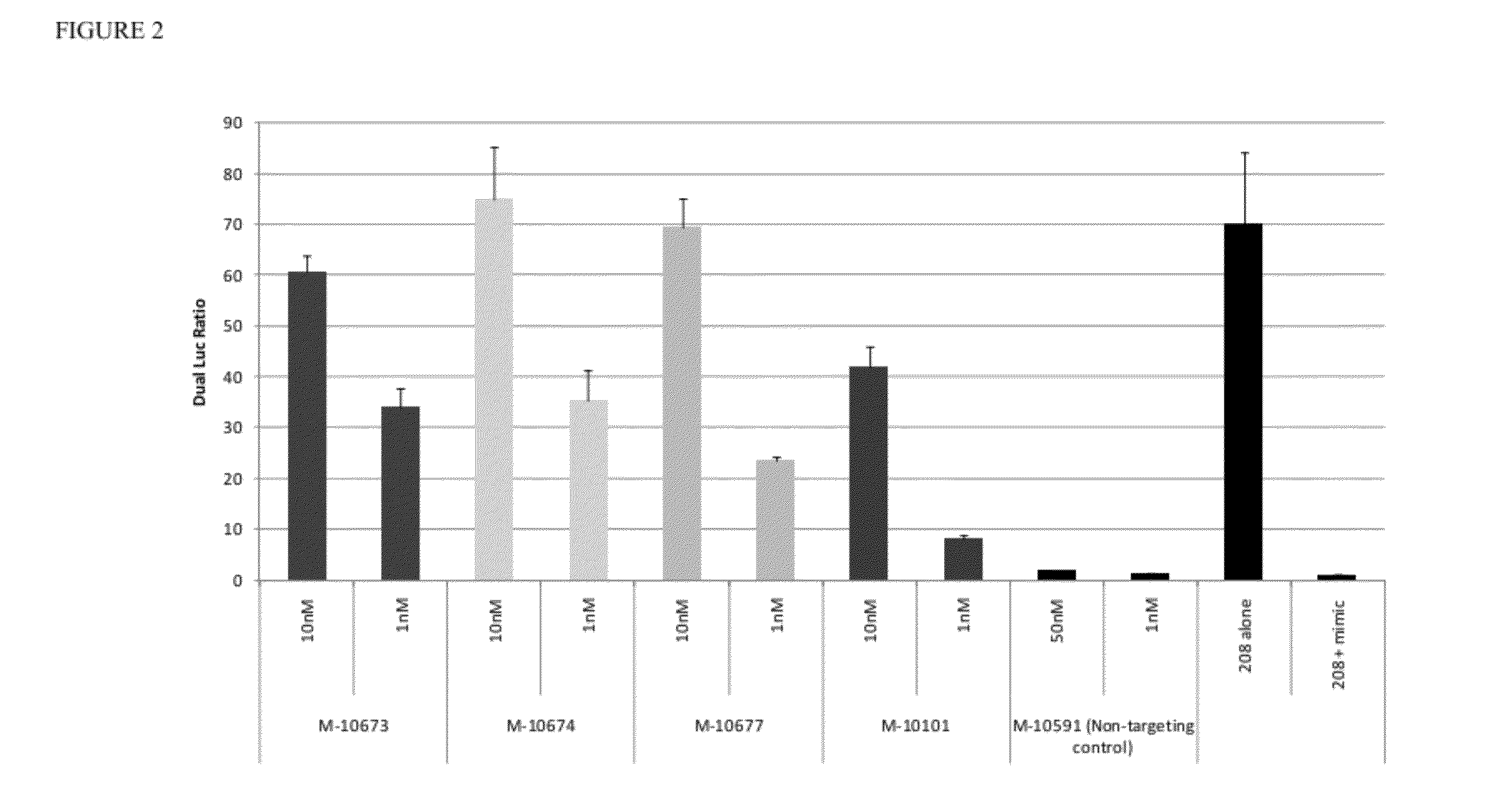Microrna inhibitors comprising locked nucleotides
a technology of locked nucleotides and microrna, which is applied in the field of chemical motifs of microrna inhibitors, can solve the problems of loss of activity and reduced potency, and achieve the effects of reducing the number of inhibitors
- Summary
- Abstract
- Description
- Claims
- Application Information
AI Technical Summary
Benefits of technology
Problems solved by technology
Method used
Image
Examples
example 1
In Vitro Activity of miRNA Inhibitors Targeting the miRNA 208 Family
[0106]A panel of miRNA inhibitors (single stranded oligonucleotides) was synthesized targeting the miRNA 208 family (miR208a, miR-208b and miR-499). The sequences and modification patterns are shown in Table 1. A description of the base codes is provided in Table 2. The panel included multiple lengths of reverse complement inhibitors ranging from 11 nucleotides to 16 nucleotides. The number of LNA modifications was varied as well as the location of the LNA modification in the oligonucleotide.
[0107]A small panel was initially tested in HeLa cells utilizing the dual-luciferase assay readout. The assay used the psiCHECK™-2 construct (Promega) (FIG. 1). HeLa cells do not express the miR-208 family; therefore the corresponding mimic was also co-transfected with the plasmid.
[0108]The results show that LNA patterns have disparate activities in vitro as inhibitors of miR-208 family miRNAs. Some particularly potent designs a...
example 2
In Vivo Activity of miRNA Inhibitors Targeting the miRNA 208 Family
[0110]Three inhibitors targeting miR-208 family were synthesized and tested in normal mice for the effect on miR-208a and miR-208b levels. The mice (n=4) were dosed 2.5, 10 and 25 mg / kg through a low pressure tail vein injection and heart tissue was analyzed four days later by qPCR for miRNA levels. The results (FIG. 6) correlated well to the in vitro dual luciferase results. These results suggest that it may be possible to lower the dose at least 10-fold for a therapeutic effect (25 mpk to 2.5 mpk).
[0111]The above initial experiments demonstrate that there are unique LNA-containing modification motifs (including number and position of LNA) that enhance potency for miR-208 family miRNAs.
[0112]M-10101 and M-10673 were tested in the Dahl salt-sensitive rat model, which is described further below. FIGS. 7 and 8 show the best survival and body weight control with M-10101.
example 3
Therapeutic Inhibition of miR-208 Improves Cardiac Function and Survival During Heart Failure
[0113]Previously, it was reported that genetic deletion of the cardiac specific miR-208a prevents pathological cardiac remodeling and up-regulation of Myh7 in response to stress. This example shows that systemic delivery of an antisense oligonucleotide (M-10101 from Table 1) induces potent and sustained silencing of miR-208a in the heart. Therapeutic inhibition of miR-208a by subcutaneous delivery of antimiR-208a during hypertension-induced heart failure in Dahl hypertensive rats dose-dependently prevents pathological myosin switching and cardiac remodeling, while improving cardiac function, overall health and survival. Transcriptional profiling indicates antimiR-208a evokes prominent effects on cardiac gene expression, while plasma analysis indicates significant changes in circulating levels of miRNAs upon antimiR-208a treatment. These studies indicate the potential of oligonucleotide-based...
PUM
| Property | Measurement | Unit |
|---|---|---|
| Molar density | aaaaa | aaaaa |
| Dimensionless property | aaaaa | aaaaa |
| Time | aaaaa | aaaaa |
Abstract
Description
Claims
Application Information
 Login to View More
Login to View More - R&D
- Intellectual Property
- Life Sciences
- Materials
- Tech Scout
- Unparalleled Data Quality
- Higher Quality Content
- 60% Fewer Hallucinations
Browse by: Latest US Patents, China's latest patents, Technical Efficacy Thesaurus, Application Domain, Technology Topic, Popular Technical Reports.
© 2025 PatSnap. All rights reserved.Legal|Privacy policy|Modern Slavery Act Transparency Statement|Sitemap|About US| Contact US: help@patsnap.com



